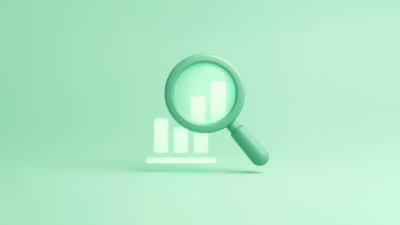Want to learn Python for data analysis but don’t know which book to start with? You’re not alone. With so many options out there, it’s easy to feel confused. Some books are too technical, some too basic, and others just don’t explain things clearly.
If you’re in India and starting your journey with Python for data analysis, this list is for you. We’ve picked beginner-friendly books that explain concepts in simple language, with examples you can relate to. Whether you’re a student, a working professional, or just curious—these books will help you take your first steps with confidence.
These aren’t just “bestsellers” or SEO-chasing lists. These are books that beginner data analysts in India can realistically afford, access, and learn from, without needing a math degree or Silicon Valley lingo.
Let’s break it down—one book at a time.
1. Python for Data Analysis
by Wes McKinney

Let’s get the obvious one out of the way. If data analysis were cricket, this book would be your bat, ball, and stumps all in one.
Wes McKinney is the creator of pandas, the Python library that’s basically the go-to for data wrangling. And he didn’t just write a manual. He built a practical, hands-on guide that walks you through the essential steps of exploring and analyzing real datasets.
Why this book works:
- It starts from the basics—installing Python, working with Jupyter—not assuming you already know the ecosystem.
- Real-world datasets are used, not toy examples.
- It focuses on data cleaning, reshaping, merging, filtering—all the “ugly” but necessary parts no one talks about.
- It’s always updated with the latest Python and pandas features.
Best part? You’re not just copying code. You’re learning why you do what you do.
Where to buy in India: Flipkart, Amazon India, or even local stores like Landmark and Sapna. The paperback’s usually ₹1500–₹2000, and it’s worth every rupee.
Real tip: Don’t binge-read it. Follow along, code with it, and revisit chapters when working on your own datasets.
2. Automate the Boring Stuff with Python
by Al Sweigart

Now, this one might not have “data analysis” in the title, but stick with me.
Before you analyze data, you need to know how to manipulate it. Clean it. Move it. Rename files, pull CSVs from folders, scrape data off websites, fix those annoying typos in Excel sheets. That’s what this book teaches.
Why it’s a hidden gem for data beginners:
- Super beginner-friendly. Starts from zero.
- Shows how Python can help with real-life tasks (think downloading files, converting formats, basic text parsing).
- Written in plain English—like a patient friend, not a professor.
- Includes a full chapter on working with Excel, CSVs, and PDFs—stuff you’ll deal with all the time in data analysis.
When to read it: Before—or alongside—your deep dive into pandas. It builds Python muscle you’ll thank yourself for later.
Indian context: If you’ve ever dealt with random bank statements, raw survey data, or old college datasets in Excel… this book shows you how to clean all that automatically.
Pro tip: The PDF is free on automatetheboringstuff.com. But you can also grab the printed copy online or at most Indian tech bookstores.
3. Pandas Cookbook
by Theodore Petrou

This one’s for when you’ve done the basics and want to start slicing and dicing like a pro.
Think of it as a “recipe book” for pandas. You won’t just learn what functions to use—you’ll learn when and why to use them. Perfect if you’ve already got your hands dirty with CSVs and DataFrames but still Google “how to groupby in pandas” more often than you’d like to admit.
Why this book matters:
- Deep dive into real-world pandas workflows.
- Teaches through practical challenges and case studies.
- Helps you think in pandas, not just memorize syntax.
A word of caution: Don’t jump into this book too early. You’ll get overwhelmed. Come back to it once you’re comfortable with the first 2 books above.
Availability in India: Often available on Packt Publishing’s India store, Amazon India, or tech bookstore chains. Expect it to cost around ₹2300–₹2900.
Best way to use it: Pick a dataset of your own—say, IPL stats or sales data from your job—and try applying each “recipe” to it.
4. Data Wrangling with pandas
by Jacqueline Kazil & Katharine Jarmul

Wrangling is what separates a “coder” from a real analyst.
Most data you’ll work with is messy. It has missing values, duplicates, mixed types, bad formatting. This book is all about cleaning it up using Python—specifically pandas.
It’s a lean, focused book—great for beginners who are past the “what is Python?” stage but not yet into heavy modeling or visualization.
Why it works well for Indian beginners:
- Talks through real-life messes—like parsing text fields or handling date formats.
- You’ll encounter these exact problems in Indian datasets (think inconsistent spellings in survey forms, mixed Hindi-English inputs, non-standard date formats from government portals).
- Clear, concise language. No fluff.
Where to get it: Online retailers or second-hand markets (often cheaper!). You can also try O’Reilly’s learning platform if you prefer eBooks.
Good use case: Clean up a Swiggy/Zomato order history CSV or UPI payment data. It’s a surprisingly great test.
5. Practical Statistics for Data Scientists
by Peter Bruce, Andrew Bruce & Peter Gedeck

Hold up—why a statistics book in a list of Python books?
Here’s the thing: Even for data analysis, Python is only half the story. The other half is statistics—and this book blends both beautifully.
It doesn’t go into code line-by-line, but it shows you how to apply core statistical ideas using Python (and sometimes R). Perfect once you’ve got a few datasets under your belt and want to start asking sharper questions.
Why it stands out:
- Clear explanations of essential statistical ideas: distributions, sampling, correlation, hypothesis testing.
- Code examples with pandas, NumPy, and SciPy.
- Focus on practical stats—stuff that matters in real-world analysis.
Indian bonus: If you’re working in sectors like edtech, finance, retail, or health—this book helps you move from “I made a bar chart” to “I discovered something useful.”
Heads up: Slightly advanced. Best after you’ve spent 2–3 months using Python.
Where to buy: Amazon India often stocks the second edition. It’s also in most campus bookstores if you’re in a university city.
Honorable Mention:
6. Data Science from Scratch
by Joel Grus

Okay, this one’s not strictly for data analysis, but it deserves a mention.
Once you’re a few months in, you’ll hit a wall where you can use libraries, but don’t quite understand what they’re doing. This book helps you peel back that layer (in a good way).
It teaches you how to build basic tools—like a linear regression or a decision tree—from scratch using Python.
Why it’s valuable (even if not beginner-beginner):
- Teaches Python, math, and algorithms together.
- Makes abstract ML concepts feel tangible.
- You don’t need scikit-learn to learn—you’ll code the logic yourself.
It’s tough, but rewarding. Like doing pushups before hitting the gym.
Final Thoughts: Which One Should You Start With?
If you’re just getting into Python for data analysis in India, start practical. The goal isn’t to memorize syntax—it’s to get comfortable with real data.
Here’s a simple roadmap:
- Start with “Automate the Boring Stuff” – build basic Python skills.
- Move to “Python for Data Analysis” – get hands-on with data wrangling.
- Use “Pandas Cookbook” to deepen your skills.
- Add “Data Wrangling” and “Practical Stats” as your confidence grows.
- Circle back to “Data Science from Scratch” when you’re ready to go deeper.
Also—don’t just read. Pick a dataset you care about. Something from your city, your job, your interests. IPL stats, Flipkart product reviews, Swiggy order history, even UPI transactions. The best way to learn is by using.





